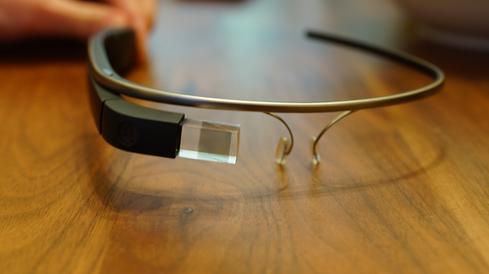Wearable tech can improve productivity, but expect to manage more data sets, APIs, and security issues before reaping the rewards.

The sun is setting on the golden age of the smartphone. And the same goes for tablets. We are entering the post-mobile world.
Need to send a message to your friend? Talk to your smartwatch. Need directions? Consult your glasses. Have to contact your doctor about your latest blood pressure readings? That monitor you're wearing already did it.
OK, let's not get completely ahead of ourselves. Smartphones and tablets are here to stay, but their sales have begun to level off, and the technology industry is ready for the next big thing.
[Consider these ways to honor user privacy while giving customers a new experience. Read Wearables Plus IoT: Preparing Amid Paranoia]
That next big thing is wearables. Devices like Google Glass, smartwatches, fitness trackers that attach to clothing, health monitors worn on (or even in) the body -- these hands-free innovations are the future. Information goes automatically to those who need it. The Internet of Things is becoming a functioning reality and is growing rapidly. IDC recently predicted that the IoT market would reach $7.1 trillion by 2020. ABI Research expects 90 million wearable devices to ship around the world in 2014.
Most current wearable products are used by consumers. However, the real opportunities, according to Deloitte's 2014 Technology Trends report (registration required), are within the enterprise. And the rewards and advantages will go to the early adopters, the report says.
So what are the benefits your organization could achieve with wearables? And how are you preparing to manage the security and privacy risks of a contextually aware business environment?
Wearables: Catalysts for a better business
Wearables bring to the table an access to information and capacity for communication that can improve customer relations and boost employee productivity and morale.
For example, computerized glasses could leave salespeople's hands free while putting entire manuals before their eyes. Imagine also companywide fitness challenges, wherein employees wear activity-tracking devices that sense their movements and transmit their progress to a central display. Such friendly competition adds fun to the workday and promotes worker health, potentially reducing an organization's medical costs.
Businesses whose operations include high-risk activities or emergency services are strong candidates for wearables. Glasses containing instruction videos or documents become especially valuable to workers repairing bridges or oil rigs, as the Deloitte report notes. Ambulance drivers and firefighters benefit, too. They're never hands-off, yet they can look up anything they need, connect to hospitals and backup crews, and monitor their own health and safety. The APIs driving such wearables enable a new world of mashups that can be especially helpful for hospitals -- for example, automatic links between a person's location and that person's medical data.
Addressing the security challenges
No doubt, this access to information is invaluable to the enterprise, yet it's a tidal wave of information. Not only do wearables create a higher volume of data, but the information is also more complex and contextual, and it is often being transmitted outside of the company firewall. These are all concerns that organizations need to address, and they must have the right tools to manage these new devices and data.
Just as smartphones, tablets, and the BYOD movement brought concerns about network security, wearables bring a new challenge, which we'll call "Bring Your Own Wearable Device." It will also bring renewed attention on API management. Within each wearable device, APIs gather, store, organize, and ultimately share all personal data.
Enterprises will have to answer critical privacy-related questions. Who is the rightful owner of this data? Is it the enterprise itself, the individual wearing the device, the device manufacturer, or the cloud that receives the device's transmissions? Can individuals take the data created by wearables with them if they leave the company?
But no matter the determination of ownership, data security has to happen at the API level. Wearables require this new API-centric approach to security because of their sheer volume. If each employee has a fitness tracker, a smartwatch, smart glasses, and some kind of healthcare monitor, the number of devices connected to the enterprise network becomes impossible to secure with traditional patches.
Furthermore, wearables can be attached to inanimate objects not connected to the Internet, such as conference rooms, shipping containers, and ambulances. This can quickly add to the flood of wearables within organizations. But if the devices are secured at their API cores, meaning they can receive updates and patches directly to their APIs, then the network remains unthreatened.
A word of caution, though: Don't make the leap at your organization without involving IT. It's just as important to provide security as it is to provide the devices.
With the right approach that addresses privacy and security concerns, enterprises can embrace the new era of "Bring Your Own Wearable Device." And doing so will keep employees happy, help attract talent, and keep companies on the cutting edge.
InformationWeek's new Must Reads is a compendium of our best recent coverage of the Internet of Things. Find out the way in which an aging workforce will drive progress on the Internet of Things, why the IoT isn't as scary as some folks seem to think, how connected machines will change the supply chain, and more (free registration required).
About the Author(s)
You May Also Like







